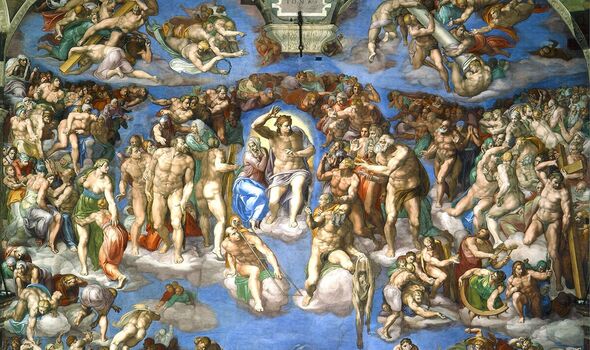Despite millions of tourists visiting Rome’s Sistine Chapel every year, none had spotted the depiction of a major biblical figure hidden in plain sight

A “hidden message” has been discovered in one of Michelangelo’s most famous artworks centuries later.
In what seems straight out of Dan Brown’s blockbuster 2003 novel The Da Vinci code, experts have only just spotted what they believe is the face of Mary Magdalene in The Last Judgement.
Sara Penco, the author of the new book Mary Magdalene in Michelangelo’s Judgement, told the Times that Mary can be seen in the corner of the artwork which covers the whole altar wall of the Sistine Chapel in Vatican City.
The biblical figure is believed to have been an apostle of Jesus and the first person to see him after he “rose from the dead”.

Don’t miss… Britain’s own Sistine Chapel reopened in all its glory [LATEST]
“The Sistine Chapel covers everything, from Genesis to the Apocalypse – how is it possible that Mary Magdalene is not here?” Sara said.
Mary Magdalene is mentioned twelve times in the gospels, more than most of the apostles and any other woman in the gospels, aside from Jesus’ family. While some church scholars sought to minimise her importance by claiming she was a prostitute who repented and was saved by Christ, others have depicted her as Jesus’s “trusted companion” or, some believe, his wife.
But she was believed, until very recently, to have been absent from Michaelangelo’s altar painting that was created roughly between 1535 and 1541. Sarah says that the figure of a woman with flowing blonde hair who is standing beneath a man holding a cross was intended to represent Mary.

Don’t miss…
Tiny country is hardest to move to – only 3 types of people can live there [BACKGROUND]
Inside the world’s smallest army with just 110 soldiers who guard one person [RELATED]
Famous European landmark where it’s illegal to take photos [UPDATE]
SUBSCRIBE Invalid email
We use your sign-up to provide content in ways you’ve consented to and to improve our understanding of you. This may include adverts from us and 3rd parties based on our understanding. You can unsubscribe at any time. Read our Privacy Policy
The cross-bearer was long believed to be Simon of Cyrene – the man described in three of the four gospels as having been ordered to carry the crossbeam of Jesus’s cross on the way to Calvary.
But Sara suggests that the man represents Jesus, as well as the main image of Jesus in the centre of the piece. She claims: “The figure … in the centre is Christ the judge, while the second with the cross is Christ the Redeemer.”
She adds that both men have similar facial features and are painted in similar poses. “The Christ with the cross is looking straight at Mary Magdalene,” she says. Mary is painted, as she often was in that period, as having blonde hair and wearing yellow robes.

Trending
The work took over four years to complete between 1536 and 1541 (preparation of the altar wall began in 1535). Michelangelo began working on it 25 years after having finished the Sistine Chapel ceiling, and was nearly 67 at its completion.
Some Vatican authorities were scandalised by what they saw as an excess of nudity in the painting.
Biagio da Cesena, a papal master of ceremonies and contemporary critic of Michelangelo, reportedly said the painting was “disgraceful that in so sacred a place there should have been depicted all those nude figures, exposing themselves so shamefully, and that it was no work for a papal chapel but rather for the public baths and taverns”.
Sourse: www.express.co.uk





